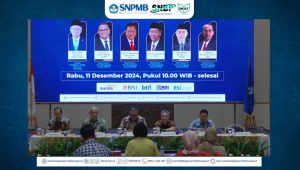Stevens Johnson Syndrome (SJS) and Toxic Epidermal Necrolysis (TEN) are severe hypersensitivity reactions characterized by bullae in the skin and mucous membrane erosion. Those are classified as the same disease but distinguished based on the extent of the epidermal damage (30% for TEN). Etiology is unclear but the main factor is reaction to medication such as anticonvulsants, allopurinol, antibiotics, & NSAIDs. According to UK-based Clinical Practice Research Datalink, from 551 validated SJS/TEN cases in the period 1995-2013, the incidence of SJS/TEN is 5.76 cases per million person per year with most cases occurring in patients aged 1-10 years and ≥80 years. Another research showed that the incidence rate of SJS is 5 cases per million person per year and TEN is 2 cases per million person per year. A similar study conducted in Indonesia reported that there are 35 SJS cases and 3 TEN cases in Dr. Mohammad Hoesin Central General Hospital Palembang from 2006-2008 and 22 SJS cases in Dr. M. Djamil Central General Hospital Padang from 2010-2011.
SJS and TEN are rare cases, but the mortality rate is high, ranging from 25-70% and found higher in older age (>50 years) due to several factors such as comorbidity. Although the mortality rate in children was lower, the long term complication was more often. Complications that frequently occur are sepsis, pneumonia, kidney failure, and complication of the eye. The incidence risk of SJS/TEN is found higher in women than in men with ratio 3:2 and the risk can increase in autoimmune/HIV sufferers. If the risk factor is greater, the possibility and severity of SJS/TEN is bigger. Until now, especially in Indonesia, only few studies identified these risk factors because of the rare cases. Thus, we conducted this study to take precautionary steps in susceptible patients.
This study used secondary data from the medical records of patients treated at Dr. Soetomo Hospital Surabaya for the period 2017-2020 with the diagnosis of SJS / TEN / Overlap SJS-TEN then compared to patients with diagnoses other than SJS / TEN / Overlap SJS-TEN but had the same treatment history. Total subjects who met the diagnosis criteria SJS / TEN / Overlap SJS-TEN were obtained as many as 28 people so that the total comparison subjects were also taken as many as 28 people. The data evaluated were gender, age, treatment history, infection history, and comorbids.
The result of this study showed that from various risk factor of SJS/TEN which are sex, age, infection, and comorbidities, the only infection that can influence the occurrence of SJS/TEN is infection by Mycoplasma pneumoniae.
Author: Dr.Damayanti,dr.,Sp.KK(K)
Detailed information from this article can be viewed on:
https://www.ijrp.org/paper-detail/2681
Risk Factors for Stevens Johnson Syndrome (SJS) and Toxic Epidermal Necrolysis (TEN) in Dr. Soetomo General Hospital Surabaya
Josephine Queena Maureen Wijanto, Damayanti, Mohammad Fathul Qorib, Sylvia Anggraeni, Cita Rosita Sigit Prakoeswa








